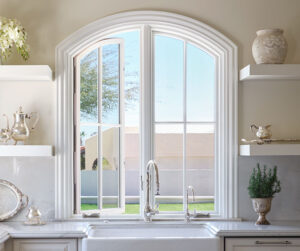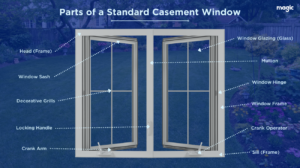When it comes to choosing windows for your home, casement windows are a popular choice among homeowners, renovators, DIY enthusiasts, and interior designers. They offer a unique blend of functionality, aesthetics, and energy efficiency. However, like any home improvement decision, it’s essential to weigh the pros and cons before making an investment. In this blog post, we’ll explore the advantages and disadvantages of casement windows to help you make an informed choice.
For Tons of Great Free Information please hit “Like & Subscribe”
Websiteconstructionconsumeradvocacyinstitute.com
Podcastanchor.fm/galloway
www.youtube.com/@ConstructionConsumerAdvocacy
What Are Casement Windows?
Casement windows are hinged at the side and open outward, much like a door. They are operated using a crank mechanism, making them easy to open and close. This design allows for excellent ventilation and unobstructed views, making them a favored option in many homes.
The Pros of Casement Windows
1. Excellent Ventilation
One of the standout features of casement windows is their ability to provide superior ventilation. Because they open fully, they allow maximum airflow into the room, making them ideal for spaces that need good ventilation, such as kitchens and bathrooms.
2. Energy Efficiency
Casement windows are known for their energy efficiency. When closed, the sash presses firmly against the frame, creating a tight seal that prevents drafts. This can significantly reduce heating and cooling costs, making your home more energy-efficient and eco-friendly.
3. Unobstructed Views
If you love enjoying the view from your window, casement windows are an excellent choice. Since they have no muntins (the strips separating the panes of glass), they offer a clear, unobstructed view of the outdoors.
4. Easy Operation
The crank mechanism makes casement windows easy to open and close, even in hard-to-reach places. This feature is particularly beneficial for elderly homeowners or individuals with limited mobility.
5. Enhanced Security
Casement windows are difficult to break into when closed, as the locking mechanism is embedded within the frame. This added layer of security can give homeowners peace of mind.
The Cons of Casement Windows
1. Limited Size Options
Casement windows are typically available in smaller sizes compared to other window types. This limitation can be a drawback if you have larger window openings or prefer expansive views.
2. Mechanical Issues
Over time, the crank mechanism can wear out or become difficult to operate. Regular maintenance is required to ensure the crank and hinges function smoothly, which can be a hassle for some homeowners.
3. Obstruction When Open
While casement windows offer excellent ventilation, they can obstruct outdoor spaces when fully open. This can be a concern if you have walkways or landscaping close to the windows.
4. Cost
Casement windows can be more expensive than other types of windows, both in terms of initial purchase and installation. The added expense may not be justifiable for all budgets.
5. Exposure to Elements
Because they open outward, casement windows can be more susceptible to damage from strong winds and weather conditions. This exposure can lead to wear and tear, necessitating more frequent repairs or replacements.
Conclusion
Casement windows offer a range of benefits, from enhanced ventilation and energy efficiency to unobstructed views and easy operation. However, they also come with some drawbacks, including limited size options, potential mechanical issues, and higher costs. By carefully considering these pros and cons, you can determine whether casement windows are the right choice for your home.
If you’re still unsure, consulting with a professional can provide additional insights tailored to your specific needs and preferences.
Ready to explore your window options? Contact us today to speak with one of our experts and get started on your home improvement project!



